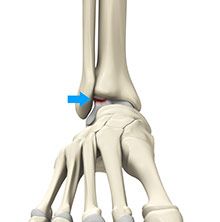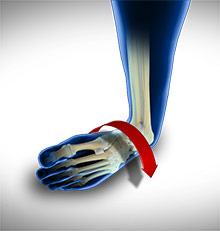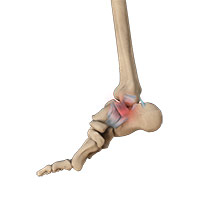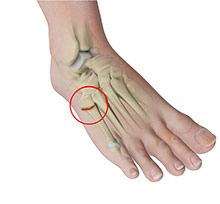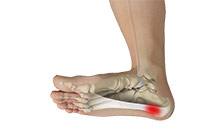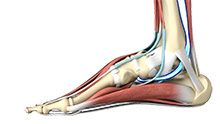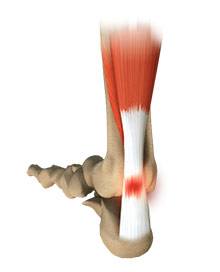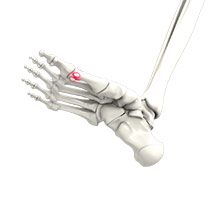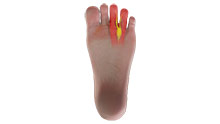Sports Injuries
Osteochondral Injuries of The Ankle
Osteochondral injuries are one of the most common causes of ankle pain. Though in most cases there is a history of injury or trauma to the ankle joint, a few cases may not have any previous history of ankle injury. A condition known as osteochondritis dissecans is commonly seen in the knee and ankle joint and is characterized by the damage and separation of a piece of bone and cartilage, within the joint, from the underlying bone.
Ankle Instability
Ankle instability is a chronic condition characterized by a recurrent slipping of the outer side of the ankle. It usually results from repeated ankle sprains. It is generally noticed during movement of the ankle joint but can also occur during standing as well.
Sprained Ankles
A sprain is the stretching or tearing of ligaments, which connect adjacent bones and provide stability to a joint. An ankle sprain is a common injury that occurs when you suddenly fall or twist the joint or when you land your foot in an awkward position after a jump. Most commonly it occurs when you participate in sports or when you jump or run on a surface that is irregular. Ankle sprains can cause pain, swelling, tenderness, bruising, stiffness, and inability to walk or bear weight on the ankle.
Stress Fractures of the Foot & Ankle
A stress fracture is described as a small crack in the bone which occurs from an overuse injury of a bone. It commonly develops in the weight bearing bones of the lower leg and foot. When the muscles of the foot are overworked, or stressed, they are unable to absorb the stress and when this happens the muscles transfer the stress to the bone which results in stress fracture.
Plantar fasciitis & Bone Spurs
Plantar fasciitis refers to inflammation of the plantar fascia, a thick band of tissue that lies at the bottom of the foot. It runs from the heel bone to the toe and forms the arch of your foot. Plantar fasciitis is one of the most common causes of heel pain. It is most often seen in middle-aged men and women, but may also occur in those who are constantly on their feet such as soldiers.
Posterior Tibial Tendon Dysfunction
The posterior tibial tendon passes through the ankle to attach the calf muscle with the bones of the mid foot. It provides stability to the arch and supports the foot while walking. Inflammation or a tear of this tendon because of injury may cause dysfunction, leading to pain and the development of flatfoot.
Achilles Tendonitis
The Achilles tendon is one of the longer tendons in the human body which stretches from the heel bone to the calf muscles. It appears as a band of tissue at the back of the ankle and above the heel. It is used when you walk, run or jump. It is the largest tendon in the body and can withstand great stresses; however, overuse or degeneration can occur resulting in inflammation called tendonitis or tendinitis.
Heel Pain
The heel is made up of the calcaneus bone and supported by a network of muscles, tendons, ligaments and soft tissues, which together support the weight of the body and stress during movement. Heel pain is a common symptom of excessive strain placed on these structures.
Sesamoiditis
Sesamoiditis is an inflammation of the sesamoid bone and the associated tendons. It is commonly seen in ballet dancers, sprinters and basketball players. It is an overuse injury caused by an increased pressure over the sesamoid bones resulting in a chronic inflammation.
Neuroma
Morton’s neuroma refers to a nerve injury between the toes, usually the third and fourth toes, which causes pain and thickening of the nerve tissue. Compression or chronic irritation of this interdigital nerve is the main cause of Morton’s Neuroma. Excess pressure is exerted on the nerves due to narrowing of the gap between the toe bones causing thickening of the nerve tissue from scar tissue formation. This causes swelling of the nerve and the surrounding tissue.


